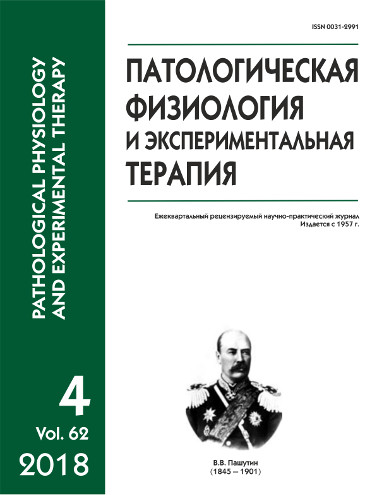Diazepam normalizes anxiety in rats with experimental anxiety-depressive state induced by diprotin A in the first postnatal week
Abstract
Earlier we have shown that rat pups treated with dipeptidyl peptidase IV (DP-IV) inhibitors in the second to third postnatal weeks further developed a mixed anxiety-depressive state, which was characterized by increased blood corticosterone. Imipramine, a tricyclic antidepressant, suppressed the depressive-like behavior in such rats in the forced swim test. This supported the consistency of these models with the main criteria of validity, «outward similarity» and predictive and construction criteria. Recently we have developed a new model of mixed anxiety-depressive state, induced by a DP-IV inhibitor, diprotin A, administered in the first postnatal week. The aim of this study was to validate this model of anxiety-depressive state. Methods. Diprotin A (2 mg/kg, i.p.) was administered to rats of the experimental group, and saline — to the control animals. Motor activity (automated open field test), anxiety (elevated plus-maze test), and depressive-like behavior (forced swim test) were evaluated in adolescent and adult rats. Two-month-old animals were injected with a single dose of the anxiolytic diazepam (1.25 mg/kg) followed by the anxiety tests. Serum corticosterone level was measured using enzyme immunoassay. Results. Diprotin A induced depressive-like behavior in rats aged one and two months and increased anxiety in two-month-old rats. In these animals, serum corticosterone concentration exceeded the control level. Diazepam normalized anxiety and habituation in the elevated plus-maze test. Conclusion. The study supported the validity of the new model of mixed anxiety-depressive state in rats induced by the DP-IV inhibitor, diprotin A, administered in the first postnatal week.






